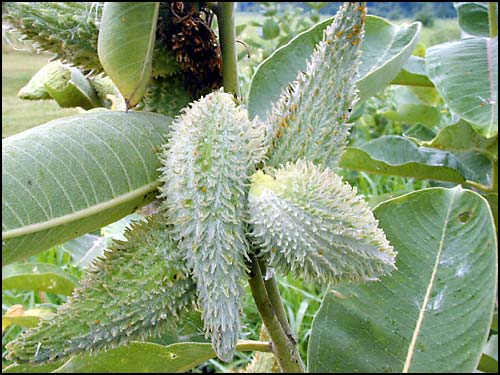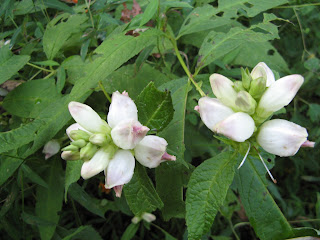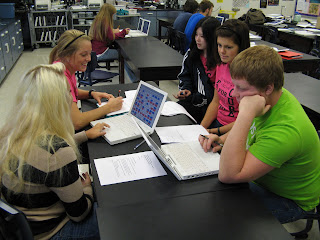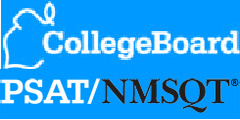We continued on our PLAN testing today first block with the sophomores filling out vocational information items in their answer booklets.
Selected Topics worked on 7 Days of Weather, Rock Cycle, Allen County Geology and we started our Rock Lab which will end tomorrow.
We started checking our intermediate level qBASIC programs today in Computer Programming. Four students demonstrated their Countries/Capitals program using Read/Data statements. One of the four stumped me with their program ... We will continue to check programs tomorrow.
I got home in time to take a walk. Full sun after a rainy cloudy morning. I was checking milkweed pods for harvesting and ran into a couple of dozen Tussock Caterpillar larva busy eating. They had already stripped a couple of plants of leaves. The black and orange larva were about two inches long. I thought the information below about moths are protected from bats with cardiac glycoside concentrations was interesting!
From Wikipedia ...
Euchaetes egle, the
Milkweed Tussock Caterpillar or Milkweed Tiger Moth, is a moth in the family Arctiidae. It is a common mid- through late-summer feeder on milkweeds and dogbane. Like most species in this family, it has chemical defenses it acquires from its host plants, in this case, cardiac glycosides (Weller et al., 1999). These are retained in adults and deter bats, and presumably other predators, from feeding on them (Hristov and Conner 2005). Only very high cardiac glycoside concentrations deterred bats, however (Hristov and Conner 2005). Adults indicate their unpalatability with clicks from their tymbal organs (Simmons and Conner 1996).
http://en.wikipedia.org/wiki/Euchaetes_egle
In the valley back of our house I found a couple of
white turtle head wildflowers. The flowers were large ... 1.5 inches or larger.
From Wikipedia -
White Turtle Head - Chelone glabra is a herbaceous plant found in wetlands and riparian forests [1] of eastern North America with opposite, simple leaves, on stout, upright stems. The flowers are white, borne in late summer and early fall. It can be used as a method of birth control, as used by Abenaki people. Its native range extends from Georgia to Newfoundland and Labrador and from Mississippi to Manitoba.[2] It is the primary plant that the Baltimore Checkerspot Butterfly will lay its eggs on (although the butterfly to some extent will use a few other species).[3][4]
http://en.wikipedia.org/wiki/Chelone_glabra
Also, we have several small fields of wingstem in full bloom mixed with ironweed and goldenrod. This picture is from close to Long Creek. The honeybees were still hard at work near sunset.































